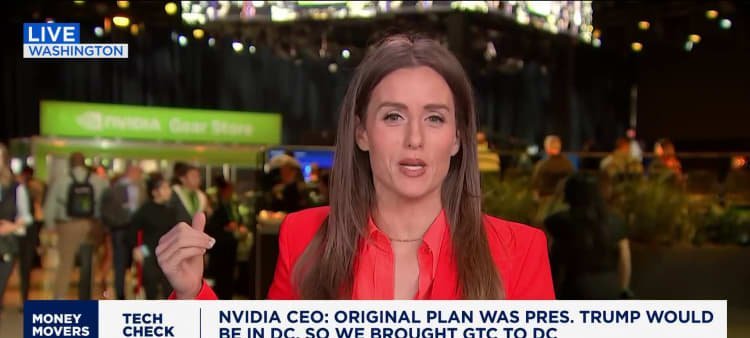Political backdrop and demand outlook
Locating GTC in the nation’s capital was designed in part to highlight Nvidia’s importance to U.S. technology policy. Huang said on a panel that the venue would have allowed Trump to attend, although the president is currently traveling in Asia. According to Reuters, Trump plans to meet Huang on Wednesday.
Demand for Nvidia’s chips remains elevated. The company has shipped six million Blackwell GPUs over the past four quarters and projects combined revenue of approximately $500 billion from the Blackwell family and next year’s Rubin generation.
Telecom partnership with Nokia
Huang also announced a strategic collaboration with Finland-based Nokia aimed at modernizing wireless infrastructure. Nvidia will invest $1 billion in Nokia, and the two firms will co-develop hardware for 5G and forthcoming 6G base stations—an equipment market the CEO valued at roughly $3 trillion.
Future Nokia base stations will incorporate a new platform called Nvidia ARC, which integrates the company’s Grace central processing unit, a Blackwell GPU and Nvidia networking components. Huang argued that deploying American-designed semiconductors in cellular networks is essential to reduce reliance on overseas technology suppliers. Huawei, the current global market leader, has been effectively barred from U.S. networks since 2018, leaving Nokia and Ericsson as the primary vendors.
Pressure from export controls
Nvidia’s efforts in Washington carry heightened significance because U.S. export restrictions have already limited sales to China, historically one of the company’s largest markets. In April, the government informed Nvidia that its H20 processor—engineered to comply with existing rules—would still require a license for shipment to Chinese customers. Nvidia later said it could have recorded about $10.5 billion in H20 revenue over two quarters absent that requirement.

Imagem: Internet
During a July visit to Washington, Huang argued that maintaining Chinese reliance on U.S. technology would be strategically preferable to encouraging indigenous alternatives. The administration subsequently indicated that licenses for the H20 would be approved, but that Nvidia must remit 15 percent of related revenue to the U.S. government. Despite that concession, Huang said this month that Nvidia is currently “100 percent out of China” and holds no market share there. The company has not yet introduced a Blackwell-based product tailored to the Chinese market.
Quantum computing initiative
Nvidia used the conference to unveil NVQLink, an interconnect designed to pair quantum processors with Nvidia GPUs. Company officials stated that the interface can accelerate quantum error-correction routines and orchestrate hybrid workloads combining classical and quantum resources. Seventeen quantum-computing startups have committed to developing hardware compatible with NVQLink.
The announcement aligns with U.S. government concerns that a foreign adversary could exploit quantum technology to intercept secure communications. Nvidia said it will also partner with the Department of Energy to build seven new supercomputers, extending a relationship that has already placed its GPUs in several national laboratories. Additional background on federal quantum initiatives can be found on the U.S. Department of Energy’s official website.
Stakes for the U.S. technology ecosystem
Throughout the event, Huang emphasized that Nvidia’s domestic manufacturing move, telecom collaboration and quantum projects all aim to solidify the company’s position within what he called the “U.S. technology stack.” Kari Briski, vice president of generative AI software for enterprise, told reporters that ensuring Nvidia chips remain central to global AI development serves American interests by shaping future innovation standards.
With Blackwell production now underway in Arizona and assembly lines slated to follow, Nvidia has taken a concrete step toward onshoring advanced semiconductor fabrication. Whether the shift alleviates policymakers’ security concerns—and how it affects ongoing trade negotiations—remains contingent on future licensing decisions and the company’s ability to navigate an evolving regulatory landscape.
Crédito da imagem: Jim Watson / AFP via Getty Images



